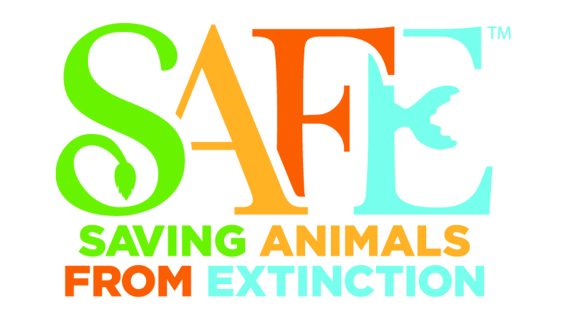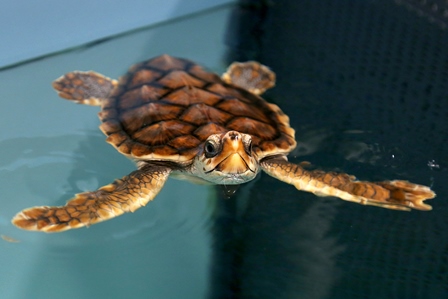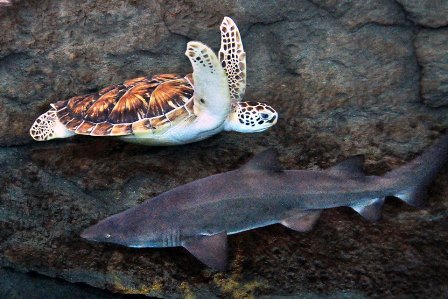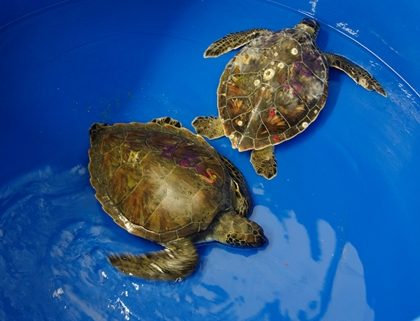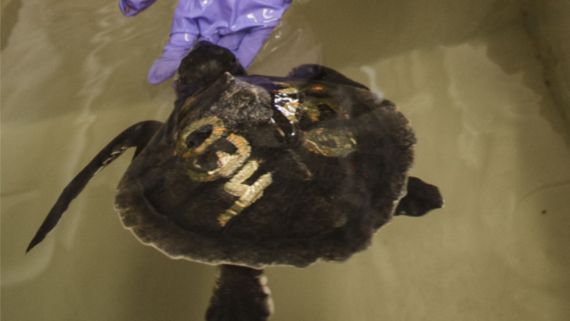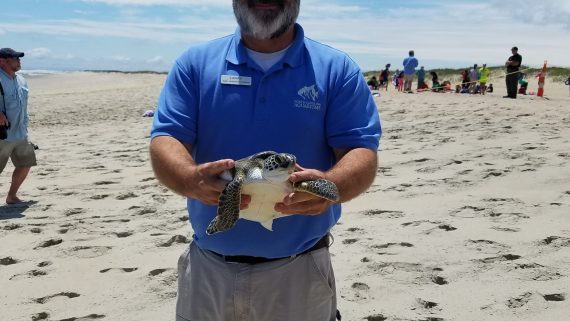Sand Dunes, Dude!
Have you ever seen a sign at the beach that read “KEEP OFF DUNES”? Dunes are hills of sand protecting the inland from harsh wind and salty water when tides, floods, or storms occur. These natural buffers not only protect people living on the coast, but provide an important habitat to plants and animals, including sea turtles. Sea turtles actually help sand dunes grow.
Sand dune plants, like sea oats, are important in keeping the structure of a dune in place by rooting the sand down and making it a strong shield against natural elements. Sand dunes can tolerate lots of salt and wind but cannot withstand tramping by beachgoers or vehicles. This is why it is so important not to walk on the dunes. Some dunes are very tall, but some dunes are smaller and closer to where many people walk on the beach. It is a good rule of thumb if you see any plants in sand to not walk on them because they are “baby sand dunes.” It is in this area, the lower dunes and the beach near it, where many sea turtles make their nests.
The dune plants let nesting turtles know they have reached a protected area of the beach to lay their eggs. Dunes provide an area for sea turtles to make their nests all while sea turtle nests help make the dunes healthier. Not many plants can grow in the sand at the beach because sand does not hold nutrients very well. When a sea turtle lays its eggs, not all of those eggs will hatch and not all of the hatchlings will make it out of the nest. This is an important natural cycle and the unhatched nest materials provide excellent nutrients the dune plants use to grow bigger and stronger dunes. By protecting sea turtles, we are helping sand dunes and thus protecting our coast.
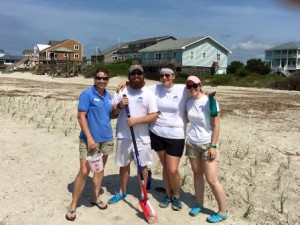
Fort Fisher Aquarium staff plant baby sea oats to help build future sand dunes on Oak Island
Nesting season is right around the corner! We will hopefully be seeing our first sea turtle nest on our coast within the next few weeks. Staying off the dunes, knocking over sand castles that you built, and filling in holes that you dug on the beach before you leave are great ways to help nesting sea turtle mothers. Check out our Let’s Build a Sandcastle lesson plan to incorporate these problems on the beach with nesting sea turtles into your classroom. Our hatchlings from last year’s nesting season are growing bigger and bigger by the week! Turtle A weighs 1116 grams and measures 19.4 cm long. Turtle B weighs 1006 grams and measures 18.1 cm long. Not sure what to do with this weight and length? Learn more in our Hatchling to Yearling lesson plan.


